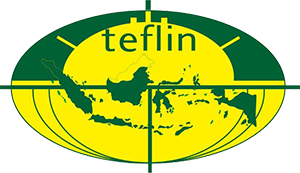Students’ Perceptions of Literary Texts, Challenges in Learning, and Learning Strategies
Abstract
Full Text:
PDFReferences
Abdul, S. N., Alwani, S. A. N., & Abdullah, T. (2022). The voice of learners on English literary texts: Passing on the mantle. Arab World English Journal (AWEJ), 12(4), 153–166. https://doi.org/https://dx.doi.org/10.24093/awej/vol12no4.11
Al-Matrafi, H. B. (2022). Educators’ attitudes toward teaching western literature to Saudi university students. Arab World English Journal (AWEJ), 13(1), 211–239. https://doi.org/https://dx.doi.org/10.24093/awej
Al-Saggaf, M. ., Al-Aqad, M. ., & Rafiee, S. N. F. A. . (2021). BTESL students’ perception towards literature subjects. Journal of Translation and Language Studies. 2021, 2(2), 46 – 60. https://doi.org/https://doi.org/10.48185/jtls.v2i2.319
Alshammari, H. A., Ahmed, E. A., & Shouk, M. A. A. (2020). Challenges to studying English literature by the Saudi undergraduate EFL students as perceived by instructors. English Language Teaching, 13(3), 8–19. https://doi.org/https://dx.doi.org/10.5539/elt.v13n3p8
Atmaca, H., & Gunday, R. (2016). Using literary texts to teach grammar in foreign language classroom. Participatory Educational Research, 4(2), 127–133. https://doi.org/https://dergipark.org.tr/en/download/article-file/778437
Babaee, R., & Yahya, W. R. B. W. (2014). Significance of literature in foreign language teaching. Internasional Education Studies, 7(4), 80–85. https://doi.org/https://dx.doi.org/10.5539/ies.v7n4p80
Bibby, S. (2012). Teaching literature in the language classroom: An introduction. The Journal of Literature in Language Teaching, 1(1), 5–9. https://doi.org/http://liltsig.org/publications/issue-1-autumn-2012/
Education, T. C. D. of. (2022). Literary genres. https://www.cde.ca.gov/ci/cr/rl/litrlgenres.asp.
Hall, S. (1997). Introduction. In S. Hall (Ed.), Representation: Cultural representations and signifying practices (pp. 1–11). Sage in association with Open University.
Hamimed, N. (2021). A review on instructing English through literary genre. Arab World English Journal (AWEJ), 12(3), 278–293. https://doi.org/https://dx.doi.org/10.24093/awej/vol12no3.19
Hasan, A. ., & Hasan, Z. . (2019). Students’ perception towards literature integration in the English language departments at Duhok and Zakho Universities. Advances in Language and Literary Studies. https://doi.org/http://dx.doi.org/10.7575/aiac.alls.v.10n.4p.13
Hassan, K. M. (2018). Difficulties facing English teachers in teaching literary texts at higher secondary level in Bangladesh. English Language and Literature Studies, 8(3), 15–26. https://doi.org/https://dx.doi.org/10.5539/ells.v8n3p15
Hwang, D., & Embi, M. A. (2007). Approaches employed by secondary school teachers to teaching the literature component in English. Malaysian Journal of Educators and Education, 22, 1–23. https://core.ac.uk/download/pdf/83543222.pdf
Iles, Y., & Belmekki, A. (2021). Charting new venues for teaching literary texts through Black English vernacular in EFL context: Case of HB Stowe’s uncle Tom’s Cabin. Arab World English Journal (AWEJ), 12(1), 128–138. https://doi.org/https://dx.doi.org/10.24093/awej/vol12no1.9
Ilyas, M., & Afzal, N. (2021). Teaching literary texts through cultural model to EFL students. Eurasian Journal of Applied Linguistics, 7(2), 22–30. https://doi.org/http://dx.doi.org/10.32601/ejal.911502
Jago, C., Shea, R. H., Scanlon, L., & Aufses, R. D. (2011). Literature & composition: Reading, writing, thinking. St. Martin’s.
Khatib, M., Rezaei, S., & Derakhshan, A. (2011). Literature in EFL/ESL classroom. English Language Teaching, 4(1), 201–208. https://files.eric.ed.gov/fulltext/EJ1080411.pdf
Naser, S. H. M., & Aziz, A. A. (2017). Students’ perceptions of the text selection in the literature component. In National Pre-University Seminar, 226–236.
Othman, N. I., Shah, P. M., Karim, A. A., Yusof, A., Din, R., Ramli, N. A., & Salleh, N. S. M. (2015). Personalizing learning of English literature: Perceptions and challenges. Journal of Personalized Learning. https://spaj.ukm.my/jplearning/index.php/jplearning/article/view/16
Queirós, A., Faria, D., & Almeida, F. (2017). Strengths and limitations of qualitative and quantitative research methods. European Journal of Educational Research Studies, 3(9), 369–387. https://doi.org/https://dx.doi.org/10.5281/zenodo.887089
Rashid, R. A., Vethamani, M. E., & Rahman, S. B. A. (2010). Approaches employed by teachers in teaching literature to less proficient students in form 1 and form 2. English Language Teaching, 3(4), 87–99. https://files.eric.ed.gov/fulltext/EJ1081986.pdf
Seo, Y., & Kim, C. (2020). The use of short fiction in a writing class: Pedagogical suggestions for secondary level teachers in EFL settings. English Teaching, 75(1), 119–139. https://doi.org/https://dx.doi.org/10.15858/engtea.75.1.202003.119
Singh, A. S., & Masuku, M. B. (2014). Sampling techniques & determination of sample size in applied statistics research: An overview. International Journal of Economics, Commerce and Management, 2(11), 1–22. https://ijecm.co.uk/wp-content/uploads/2014/11/21131.pdf
Skiada, M. (2021). The implementation of authentic language input in second language (L2) teaching: Pedagogical arguments. Training, Language and Culture, 5(1), 86–96. https://doi.org/https://doi.10.22363/2521-442X-2021-5-1-86-96
Tevdovska, E. S. (2016). Literature in ELT setting: students’ attitudes and preferences towards literary texts. Procedia-Social and Behavioral Sciences, 232, 161–169. https://doi.org/https://dx.doi.org/10.1016/j.sbspro.2016.10.041
Tseng, F. P. (2010). Introducing literature to an EFL classroom: Teacher’s presentations and students’ perceptions. Journal of Language Teaching and Research, 1(1), 53–65. https://doi.org/https://dx.doi.org/10.4304/jltr.1.1.53-65
Violetta, I. K. (2015). The use of literature in the language classroom: Methods and aims. International Journal of Information and Education Technology, 5(1), 74. https://doi.org/https://dx.doi.org/10.7763/IJIET.2015.V5.479
Wasti, A. T. (2016). The role of literary texts in Pakistani EFL classrooms: Issues and challenges. University of Essex.
Zawawi, D. (2007). Quantitative versus qualitative methods in social sciences: Bridging the gap. Integration & Dissemination, 1(1), 3–4. https://core.ac.uk/download/pdf/42988233.pdf
Zeybek, G. (2018). Turkish EFL pre-service teachers’ views on integrating various literary genres in teaching English. Language Teaching and Educational Research, 1(1), 25–41. https://doi.org/https://dergipark.org.tr/en/download/article-file/481331
DOI: http://dx.doi.org/10.21043/jetli.v6i2.19925
Refbacks
- There are currently no refbacks.
Copyright (c) 2023 Journal of English Teaching and Learning Issues







